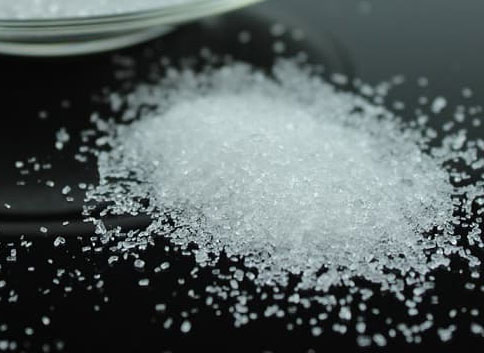Manganese sulfate
Magnesium sulfate (magnesium sulfate) is a magnesium fertilizer for a wide range of agricultural crops, a valuable source of magnesium and sulfur for the full development of plants.
Water-soluble non-caking product. They are effectively used in vegetable growing on various types of soil, both open and protected. Use any irrigation system for spraying field, vegetable, ornamental and other crops.
Form: crystalline
Packing: 25 kg
Nutrient Magnesium Mg Sulfur S
Content,% 17 13.5
Properties
Not hygroscopic, non-caking, easily soluble
Increases the yield of fruit and agricultural crops
The palatability of potatoes and vegetables is improved by increasing the content of starch and vitamins
Magnesium sulfate application
Spring soil preparation (cucumbers, tomatoes) - 7-10 g / m2 (0.7-1 kg / weaving, ...)
Spring soil preparation (other vegetables) - 12-15 g / m2 (1.2-1.5 kg / weaving, ...)
Fruit trees (near-trunk circle) - 30-35 g / m2 (3-3.5 kg / weaving, ...)
Root feeding during the growing season is carried out with a solution of magnesium sulfate - 25 g per 10 liters of water, every 15-20 days
Spraying (vegetable, annual flower crops) - 15 g per 10 l of water, consumption - 1-1.5 l / m2
Spraying (raspberries, currants and other shrubs) - 15 g per 10 l of water, consumption - 1.5-2 l / m2
Spraying (young and adult trees) - 15 g per 10 l of water, consumption - 2-3 l / m2 and 5-10 l / m2, respectively
Also, to achieve high results, it is recommended to use magnesium sulfate together with a solution of carbamide (urea) (the amount for preparing the solution is selected depending on the varietal needs and the growing season of the cultivated crop) and microelements.
By adding magnesium sulfate to the working solution of urea, the number of burns (in dry weather) on plants that appear during the use of urea itself is reduced.
Magnesium deficiency is more common on light and acidic soils. Of the garden crops, the most acute reaction to the lack of magnesium is potatoes, tomatoes and cucumbers.
The lack of magnesium can be noticed by the following sign - the areas of the leaves between the veins turn yellow, darken, and then die off altogether.
-
What does it look like
Looks like a finely crystalline powder with a pink tint
-
Synonyms
magnesium sulfate, magnesia, fertilizer, magnesium sulfate, magnesium 7-aqueous, feed magnesium, epsom salt
-
Can I buy wholesale or retail?
Buy wholesale
-
Chemical formula
MgSO4
-
Hazard Class
4 hazard class
-
GOST
GOST 4523-77
-
Mass fraction of active substance
98%
Precautions, transportation and storage
Manganese sulfate monohydrate is toxic to humans. On contact with skin, it causes eczema and dermatitis, and on contact with mucous membranes - burns and irritation.







